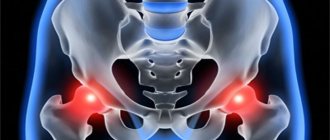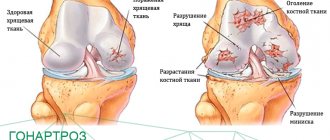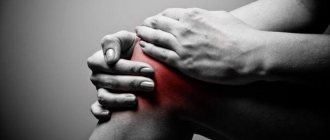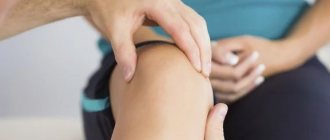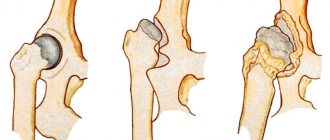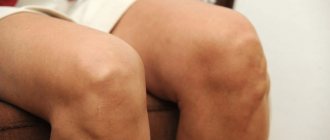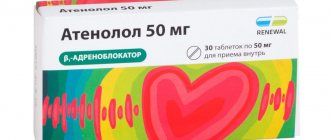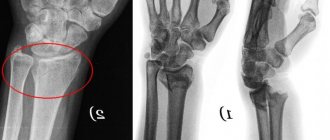Such a common sports injury as a sprained ankle joint is quite unpleasant, but quite treatable even at home. But it is possible to cure it yourself if you first visit a doctor, who, after examining the condition of the ankle and the degree of sprain, will be able to give all the necessary recommendations.
It must be remembered that an ankle injury requires serious and long-term adherence to a certain regime, so it is necessary to prepare for the inability to play sports and exercise in the next month, and in more serious cases – even for several months.
Ankle sprain: treatment
Ankle sprain: treatment, causes and preventive measures - we’ll talk about this in the article.
Causes
Over 80% of cases of the pathological condition are caused by turning the foot inward. Additional causes of sprain of the ligamentous apparatus of the ankle joint are bending of the distal limb outward, a sharp change in the direction of similar movements repeated for a long time.
The risk of this type of injury increases if the patient has a history of:
- congenital anomalies of the movable joint (including flat feet);
- diseases of connective tissue structures;
- arthrosis;
- instability of an intermittent connection resulting from previous damage to muscles and tendons, infectious diseases, metabolic failures;
- obesity.
Fiber tears and cord ruptures are more often diagnosed in 4 categories of patients:
- People leading an active lifestyle. Sprains in this group of people occur when jogging, walking over rough terrain, jumping, etc.
- Athletes. Injuries occur when there is increased stress on the body.
- Women who prefer to wear high-heeled (platform) shoes with a pointed toe.
- Persons whose profession involves prolonged periods of sitting. Lack of physical activity leads to physical inactivity and dysfunction of the musculoskeletal system (ligament weakness).
Sprains of the connective tissue elements of the ankle are often diagnosed in children and the elderly. In the first case, injuries are associated with increased mobility of a child exploring the world, in the second - with age-related changes in the joints.
What are ligaments and what role do they play?
A ligament is a special tissue of the body that connects and strengthens joints without impairing their mobility. Ligaments work intensively not only in seasoned athletes, but also in ordinary people in everyday life.
Read also: Finger sprain
We all walk, with the possible exception of people with limited mobility. This means that we constantly expose our ankle ligaments to danger. Incomfortable shoes, uneven or slippery surfaces, some random objects in the way - and injury may occur.
I'm not even talking about specific women's shoes - high heels and platforms: in the pursuit of beauty it is easy to get accompaniment in the form of a sprained ankle.
Types and degrees of stretching
Systematization of damage taking into account their location classifies pathological conditions into 3 types:
- Partial, complete ruptures of the ligaments in the distal fibula. They occur with excessive inversion - inward rotation - of the foot.
- Deformation of the deltoid cords connecting the scaphoid, calcaneus and talus to the medial malleolus. Occurs when there is excessive eversion—rotation of the distal leg outward.
- Damage to the ankle syndesmosis caused by excessive rotation and extension of the feet.
Ruptures of the cords of the deltoid complex and structures connecting the distant parts of the bones of the leg can accompany dislocations and fractures (including separations of tendons from the periosteum).
Classification of damage by severity
According to the degree of damage, abnormal conditions are differentiated into 3 categories.
- Mild types of deformations include overstretching of tissues, accompanied by microtears of no more than ¼ of the total number of fibers. The patient can lean on the limb immediately after the injury and walk with support. Regeneration of connective tissue elements for first-degree injuries takes about 2 weeks.
- When up to ¾ of the fibers are torn, moderate deformities are diagnosed. The anomalies are characterized by severe pain. Medical statistics help you find out how long it takes for a grade 2 ankle sprain to heal: the recovery period ranges from 14-30 days.
- Severe types of injuries are complete ruptures of connective tissue. There is no possibility of support on the limb, the functions of the foot are impaired. The victim experiences excruciating pain.
Only a doctor can tell you how long it takes for ankle ligaments to heal with a grade 3 sprain. Regeneration time varies from 2 months. up to 1 year; recovery will require therapeutic measures and a set of rehabilitation procedures.
Therapeutic exercises for ankle injuries
Therapeutic exercises help improve blood circulation and strengthen ligaments. If you refuse to perform the exercise, the joint will take longer to recover, or will not heal completely. You can do gymnastic exercises starting from 3-5 days after the injury.
The gymnastics complex is divided into two parts: preparatory and main. The first helps to stretch the joint, and the second helps improve blood circulation.
First part:
- I.P. (starting position) – sitting on a chair. Raise your right leg and pull the toe towards you, then away from you. Repeat with your left leg. Do 4-6 movements on each leg.
- I.P. - sitting on the floor. Place the shin of your right leg on the thigh of your left. Grasp your right foot with your left hand and make 5 rotations clockwise and the same number counterclockwise. Repeat with the other leg.
- I.P. - sitting on a chair. Place your hands on your knees. Now try to rise onto your toes while your hands should provide slight resistance. Repeat 6-10 times.
Second part:
- I.P. lying on your back against the wall. Raise your knees bent and place them on the wall. Rise up onto your toes and push against the wall at the same time. Do 5-10 repetitions.
- I.P. - sitting. Bend your right leg at the knee and place a small rubber ball under your foot. Using gentle pressure, roll the ball back and forth, straightening and bending your leg. Repeat with the other leg. 6-8 movements on each leg.
- I.P. - standing facing the wall. Leaning your hands on the wall, smoothly rise onto your toes. Repeat 6-10 times.
All exercises must be performed smoothly. If some movement causes pain, reduce the amplitude or do not do it at all.
Symptoms
The clinical picture varies according to the severity of the deformity.
For mild injuries, symptoms are limited to moderate discomfort that occurs when moving. Changes in gait disappear immediately after tissue healing. In some cases, a slight swelling is detected at the site of the injury.
In the list of signs of an ankle sprain, item 2:
- strong pain;
- soft tissue swelling;
- bruise in the area of fiber rupture;
- partially impaired joint stability;
- local temperature increase.
Warn
To prevent ankle injury, you should avoid walking on uneven sidewalks or paths. Sudden twisting of the leg can lead to serious consequences. Especially if the previous foot sprain was not treated. The causes of damage may be excess body weight, lifting heavy objects, or flat feet. Not exercising and wearing uncomfortable shoes can also lead to weakened muscles.
Attention! Repeated sprains will cause foot deformation and even bone destruction.
Understand and recognize
Symptoms of muscle fiber rupture are well known to each of us. Pain in the area of the outer ankle of the leg, swelling, and in case of severe injuries - hematoma. It is possible that a person’s body temperature may increase and movement may be limited when walking.
Experts distinguish three degrees of sprains.
- Mild sprain – accompanied by a slight nagging pain in the injured muscle; slight lameness is possible. There is usually no swelling.
- The average degree of sprain is a painful condition, swelling occurs, foot movements and walking are difficult, accompanied by severe pain.
- A severe sprain is a complete rupture of one or more ligaments, accompanied by severe and acute pain. Typically, such an injury is preceded by a fracture of the tibia. The person cannot walk independently; the leg swells greatly.
Diagnostics
The diagnosis is made on the basis of a survey, examination of the patient and obtaining the results of additional instrumental studies.
To confirm a preliminary conclusion, the following are used:
- Radiography. Allows you to avoid fractures of the articulation bones.
- Contrast arthrography. An auxiliary method used when there is a discrepancy between the symptoms of an ankle sprain and the X-ray data.
- MRI. Helps confirm (refute) the doctor’s assumptions about the presence of additional injuries in the patient.
- Ultrasound. Helps identify deformations of soft tissues, Achilles tendon.
First aid
If you suspect an ankle sprain, correctly provided first aid helps the patient recover quickly and easily.
Before performing a set of urgent measures, shoes and hosiery that are compressing the limb should be removed from the patient.
In the list of mandatory manipulations:
- Raising the injured foot by 20-25º by placing a thick pad made of a blanket or clothing under the shin. Taking it will reduce swelling.
- Applying ice or a sealed container of cold water to the affected area. The procedure will stop subcutaneous bleeding. Keep the hypothermic pack on the damaged area for longer than 30 minutes. it is forbidden.
- Immobilization of the injured mobile joint using a fixing cruciate bandage. The fabric is applied in eight-shaped moves around the lower leg and foot. If a fracture is suspected, the limb should be immobilized from the knee joint to the toes. The tire can be made from scrap material.
- The victim takes a tablet analgesic in case of severe discomfort.
It is forbidden to postpone a visit to the hospital: trying to treat a sprain on your own (at home) can provoke the development of complications.
Physiotherapy
If the ankle is sprained, UHF therapy is prescribed. Alternating currents dilate blood vessels and accelerate regenerative processes.
- The effect of ultrasound is comparable to micromassage. The technology relieves inflammatory reactions and reduces the sensitivity of nerve receptors in the affected area.
- Paraffin applications have an analgesic and stimulating effect.
- Alternating different-frequency currents in diadynamic therapy is used for pain blockade.
- Hardware massage enhances the effect of procedures, relieves muscle spasms, and improves nutrition of soft tissue structures.
Treatment
The main objectives of the treatment of abnormal conditions are tissue regeneration, elimination of discomfort and restoration of the functions of the ankle ligaments lost due to damage.
For grades 1 and 2, medications and orthopedic devices are used. For severe injuries, surgical interventions are prescribed.
Medicines
The conservative method includes the use of:
- anti-inflammatory ointments (Dolgita, Deep Rilifa);
- eliminating hematomas and swelling of liniments (Troxerutin, Troxevasin);
- nonsteroidal anti-inflammatory drugs and analgesics (Ibuprofen, Tempalgin);
- multivitamin complexes.
In case of severe discomfort, Ketoprofen is used (it is recommended to apply it to the injured area and secure the compress with a bandage).
After 4-5 days from the start of the procedures, cooling gels are replaced with warming ones (Capsicam, Espol), medications that improve blood circulation (Pentoxifylline, Trental) are used.
Treatment regimens for sprained ankle joints include fixation of the joint with elastic bandages for a period of 7-14 days. The doctor will explain the methods of properly applying bandages at home to a patient who has sprained his leg.
Independent use of the above remedies will lead to a worsening of the condition. Only a traumatologist can decide how to treat a sprained ankle.
Folk remedies
The use of alternative medicine recipes helps to activate the process of tissue regeneration, relieve discomfort, and reduce swelling.
- If the joint hurts and swells, compresses of grated raw potatoes, crushed aloe, and mashed cabbage leaves should be applied to it. The selected component is fixed at the site of the bruise with a regular bandage and held until heat appears.
- Applications with bodyaga help to resolve bruises and relieve inflammation.
- Propolis-based ointment accelerates the recovery of damaged ankle ligaments. To prepare it, you need to mix 15 g of beekeeping product with 100 grams of melted Vaseline and boil for 10 minutes. When using liniment, tumors subside and trophism of structures improves.
- Warming vodka compresses are allowed after 5 days. from the start of treatment to relieve swelling. A cloth soaked in a liquid diluted with boiled water is applied to the diseased joint, fixed with a film and a warm diaper.
Rehabilitation period
The recovery period after a sprain depends on the degree of injury:
- about 2 weeks with slight stretching,
- 2-3 months for 2nd degree ligament tears,
- six months to a year for grade 3 injury.
Grade 1 sprain does not require special rehabilitation measures and all treatment is usually limited to rubbing ointments and applying a fixing bandage.
For grade 2 and 3 sprains, physiotherapeutic procedures are prescribed: electrophoresis, paraffin therapy, ozokerite applications, ultrasound, laser and magnetic therapy.
After prolonged immobilization of the joint, therapeutic exercises . The exercises are aimed at developing the ankle joint (moving the foot in different planes and directions) and developing its strength (lifting various weights with the foot, supporting the injured leg, and eventually jumping on one leg).
Rehabilitation
Common methods of restoring damaged connective tissue structures include physiotherapy, exercise therapy, and massage using warming ointments.
Physiotherapy
Medical statistics show that patients undergoing physiotherapy recover faster.
The first sessions are scheduled on average after 2 days. after injury (surgery). The characteristics of the most popular treatment methods are shown in the table below.
| Methodology | Impact | Minimum course duration |
| Magnetotherapy | Relieving inflammation | 10 visits |
| Laser therapy | Improving lymph outflow, vasodilation | |
| Electrophoresis (with NSAIDs, novocaine) | Analgesic, anti-inflammatory effects | |
| Diadynamic therapy | Activation of metabolism | 8 |
| Cryotherapy | Relief of discomfort | 10 |
| Amplipulsetherapy | Increased sensitivity of denervated areas, restoration of muscle tone and ligament elasticity | 8 |
The list of additional physiotherapeutic procedures includes peloid therapy, paraffin therapy, foot baths (hydrogen sulfide, with sea water).
Gymnastics
Special gymnastics classes speed up ankle rehabilitation, stimulate blood circulation, strengthen muscles, ligaments and tendons. Physical therapy is prescribed if the patient’s discomfort has gone away.
The main types of exercises include:
- lifting small objects with your toes;
- performing rotational and flexion-extension movements of the feet;
- rolling from heel to toe;
- walking on the back, inside and outside of the feet.
Training is carried out daily, with a gradual increase in loads on the joint.
Massage
At the preparatory stage, the ankles and shins are warmed up with gentle, stroking movements directed from the bottom up.
Direct impact on the joint is carried out using concentric rubbing.
The procedures are completed by lightly massaging the limb.
A little bit of anatomy
Our foot is connected to the lower leg using 4 cords.
- The first is the large deltoid (located on the inside of the ankle).
- The second and third cords are called the anterior and posterior talofibular cords (connecting the fibula and tibia to the foot).
- And the fourth is the calcaneofibular (articulates the ankle bone with the heel).
They are needed to ensure joint mobility. And also to protect them from too much freedom in movement. It is thanks to this structure that we can rotate our feet and calmly climb up an inclined or uneven surface.
Ligaments are an extremely important structural unit. They provide not only movement control, but also help protect your feet from excessive pressure and shock when walking.
